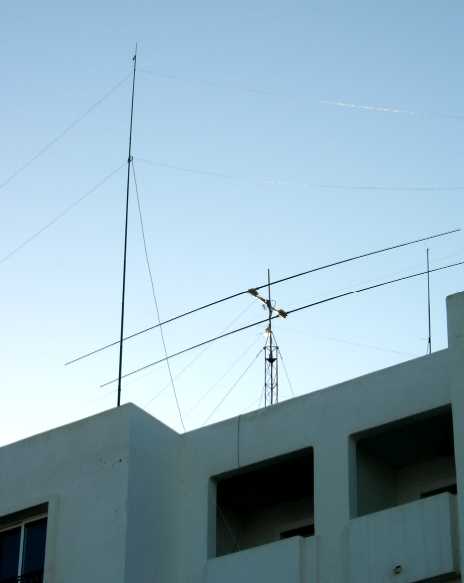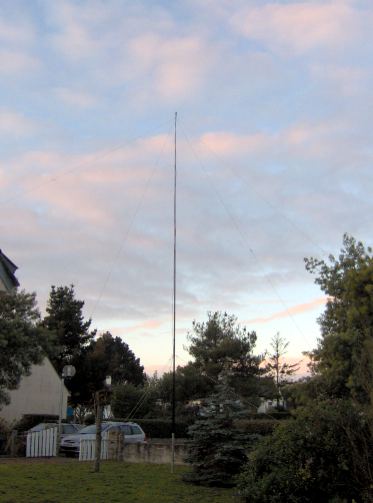 Unfortunately, due to a bad configuration of the MK2R, I recorded only the main radio during the contest. However this recording, made at home using one verticaly and an one horizontally polarized antennas, gives an idea of the benefit which can be expected from the "antenna diversity" in the headphone. Obviously you have to listen it in stereo, and preferably using a headphone.
Unfortunately, due to a bad configuration of the MK2R, I recorded only the main radio during the contest. However this recording, made at home using one verticaly and an one horizontally polarized antennas, gives an idea of the benefit which can be expected from the "antenna diversity" in the headphone. Obviously you have to listen it in stereo, and preferably using a headphone.
This audiogram, shows one of the problem I experienced and slowed me down a bit: The 600ms delay between the last transmitted dash and the return of the RX, is defenitely too long, and generated quite a few "prefixes" misses (as you can hear in the following recording). As a security, I just used Joseph's sequencer (which protects the RX and the beverage preamp) on the "PA-PTT" output of the MK2R... I should have looked at this more carefully before the contest !
 10mn of the second hour, with a good rate (>200). As mentionned above, quite a few prefixe repetition requests could have been avoided by optimizing the RX return time... my mistake !
10mn of the second hour, with a good rate (>200). As mentionned above, quite a few prefixe repetition requests could have been avoided by optimizing the RX return time... my mistake !
 Beyond the QRM made by my compatriots, starting a +170Hz from my freq, the benefit of the diversity receive is illustrated on the QSO's with W1TO and EA4AYD (only the "beverages receiver" is recorded here). Nothing was audible from W1TO before I switched to the NW beverage, but I heard him calling on the delta in my left hear... the same for EA4AYD, who was too QRM on the beverage, but perfectly audible on the transmit antenna.
Beyond the QRM made by my compatriots, starting a +170Hz from my freq, the benefit of the diversity receive is illustrated on the QSO's with W1TO and EA4AYD (only the "beverages receiver" is recorded here). Nothing was audible from W1TO before I switched to the NW beverage, but I heard him calling on the delta in my left hear... the same for EA4AYD, who was too QRM on the beverage, but perfectly audible on the transmit antenna.




























